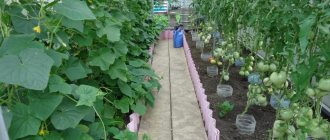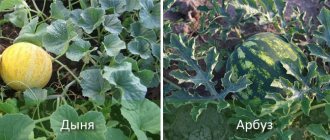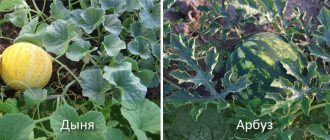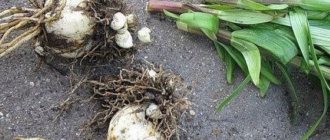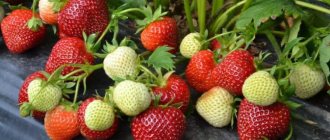Strawberries have long been a leader among the most popular berries. It is practically the first to appear in gardens and attracts with its wonderful taste and aroma, which directly depends on the place of growth and the care conditions that were created for it. Strawberries are a real storehouse of vitamins and microelements and have a wide range of applications.
To plant strawberries in the autumn, gardeners suggest trying both remontant berries (which can produce 2-3 harvests per season) and regular berries, which bear fruit once per season. It is worth planting several varieties of each and choosing the right one for yourself.
You need to think carefully about the planting time: autumn or spring. Having planted berry bushes in the fall, you can enjoy the first harvest of juicy fruits in early spring.
Strawberry planting dates in autumn
Autumn is considered the most favorable period for planting strawberries in open ground. It is better to choose the middle or end of September for this. The ideal time, since the soil is no longer hot from the scorching summer sun, but has not yet cooled down from the autumn cold. Moreover, before the start of winter there is enough time for the plants to take root and become stronger for the frost.
The taste and aroma of the fruit depends on where the strawberries grow. In sunny areas that have received a moderate amount of moisture, strawberries grow sweeter and more juicy. But in shaded areas it can be small and sour.
Choosing a location on the site
Well-lit places where beans, beets, carrots, lettuce, garlic, radishes, celery, and dill previously grew are ideal for strawberry bushes. But in areas after peppers and potatoes, cabbage and eggplants, it is not recommended to plant strawberries.
Any type of soil except wetlands can be suitable for this crop. A slightly larger harvest and larger berries grow on loam, black soil, and sandy loam soils. An ideal harvest can be obtained even on heavy soils by adding peat, humus, manure or ash. It is desirable that the soil has an acidity in the range of – 5.5 – 6.5 pH.
How to get rid of beetle larvae and wireworms
The first method is mechanical control, that is, cultivation such as disking and harrowing. The larvae will be killed and pulled to the surface where they will be eaten by birds.
The second method is chemical control. Preparations with chlorpyrifos at a dose of 5 l/ha are used before planting strawberry plantations on soils heavily populated with larvae.
Quantity and types of fertilizing
Their type depends on what soil is chosen for planting:
- Loamy. You can add a mixture of humus and compost or replace such fertilizers with nitroammophos.
- Sandy. For 1 sq.m., 2.5 buckets of humus or manure are enough.
- Turf. It is better to fertilize with sawdust.
- Heavy clayey. Fertilize with a mixture of manure and river sand.
- Soils with low acidity. Add dolomite flour, ash or limestone flour.
- Alkaline. Peat and rotted fallen leaves work well.
For all types of soil, in order to grow healthy and strong plants, you should definitely add ash to the soil 2-3 weeks before planting. This is not only an additional fertilizer, but also a disinfectant. The fruits are of higher quality and purer.
At the same time, it must be added before digging the soil so that it mixes well with the soil. But it all depends on the level of soil fertility. A mandatory procedure is the complete removal of weeds and remnants of the previous harvest from the selected area. On the day of planting, carry out loosening. It is better to start general soil preparation 4-6 weeks before the intended planting.
Soil fertility level
The soil fertility indicator can be determined by performing a study that includes analysis of key indicators, such as pH level, humus content, nitrogen, phosphorus, potassium and other microelements. This research can be carried out at an agricultural institute.
Garden strawberries are extremely susceptible to salt, therefore, you should not apply a fair amount of organic fertilizers before planting strawberry seedlings, so as not to harm their root system.
Soil pH measurement
The most fertile soil is considered to be soil with 3% humus content. This indicator is responsible for a sufficient amount of moisture in the soil. If the humus level is lower than required, add manure, thoroughly mixing it with the soil.
If the pH level is below 5.0, it should be improved by adding chalk or lime in time. An excellent source of quicklime is processed sugar beet product.
If the level of phosphate is low (less than 160 mg per 1 kg), it is recommended to add its main measure.
The soil should be enriched with fertilizers such as phosphorus, calcium, and magnesium before plowing the site. Nitrogen and potassium fertilizers are applied during plant growth.
Preparation of seedlings
Both material purchased from a special nursery and material collected at home are suitable as planting material. A good healthy seedling has at least 3 healthy leaves, and the average root length is about 10 cm.
If some roots are very long, they can be trimmed. In order for the bush to quickly take root and be less susceptible to damage by pests and diseases, the roots of each plant, before planting, must be kept in a mixture of humus and soil, to which water and growth stimulants have been added: Epin or Micras.
Breeders have developed dozens of strawberry varieties that are ideal for planting in open ground. Some of the most famous: “Rusapovka”, “Zarya”, “Talisman”, “Pocahontas”, “Zengan-Zengan”.
Weeding Tips
Before planting, the bed must be thoroughly treated to remove weeds. Therefore, standard weeding techniques often do not work. There are weed plants from perennial varieties that are much more difficult to weed out. Advice from experienced gardeners will help you get rid of weeds, both perennial and simpler ones:
- Weeding the beds must be done immediately after the last snow has melted;
- For a week and a half, you should cover the bed with black, non-woven material. If there is none, you can use agrofibre or roofing felt;
- Then remove the shelter after the specified period;
- Cut off the shoots that appear afterwards with a flat cutter or using a hand cultivator.
This procedure is relevant for spring cleaning of strawberry beds. If the cleaning is of the autumn type, the cover should not be removed until August. Or you will have to constantly cut annual weeds by hand. This option is ideal for gardeners who are not supporters of organic farming.
Using these tips, you can choose the right land for planting strawberries, as well as learn how to care for them. As a result, the berry will thank the gardener with a high-quality harvest.
Landing rules
To speed up the process of rooting the crop, it is recommended to plant strawberries in the evening, or at another time, after waiting for a cloudy day. To plant, dig a furrow, which is dug under a stretched rope. The gap between the grooves should be at least 65 and no more than 85 cm (it all depends on the variety). There is about 20 cm between the plants themselves. It is this planting scheme that will help the plants survive the winter without loss, and it is better to bear fruit in the spring. It is necessary to bury it in the soil so that the bushes are not pulled out. It is necessary to plant so that the “core” of the plant is above the ground. Be sure to mulch using peat or humus.
The conditions for planting strawberries in open ground in the autumn depend on how the planting is carried out.
Planting with mustache in the ground
If you use your own planting material when planting, it must be healthy, use bushes no older than 2-3 years, from which they distinguished themselves with a high yield the previous year. To obtain high-quality planting material, it is recommended to remove flower stalks, because gardeners insist that in the same season you can get either a rich harvest or high-quality healthy seedlings from a strawberry bush.
In order to obtain planting material, you need to dig the first rosettes on the strawberry mustache into cups. It is from the first rosettes that you will get strong and healthy plants. By correctly calculating the time of planting, you can get ready-made seedlings in cups, when planting which you will only need to remove excess leaves (there should not be more than 3-4 of them). Planting bushes is carried out using the method already described.
When purchasing seedlings, it is worth considering that they must be local - acclimatized to your climatic conditions. So, seedlings grown in a warmer climate will probably not be able to fully take root and survive harsh winters.
Every 3-4 years it is worth renewing strawberry plantations, since this is the most optimal period, after which productivity indicators sharply decrease. And it’s very easy to grow young seedlings yourself.
Planting in agrofibre
Gardeners prefer this method because of the low costs, which will help increase the berry yield by almost half. Agrofibre is often used when planting in northern regions, where winters are long and frosts are frequent.
The method has its advantages:
- protects the crop from weeds, plays the role of a protective barrier from snow, frost, constant drought or heavy rains;
- covering material is considered environmentally friendly and safe for both the fruit and the person who will care for it;
- Proven UV resistance, waterproof and airtight;
- It is also used as a means for mulching trees and shrubs in the garden.
Agrofibre is mainly sold in widths of 3.2 or 1.6 m. Therefore, when using this method of planting strawberries, you need to adjust the size of the bed to the parameters of the covering material. If the strip of the bed is larger than the specified dimensions, then it is better to overlap the material. The approach must be at least 15 cm. P
The preparation of seedlings and soil under cover is carried out in the usual manner indicated above. Planting under agrofibre allows you to avoid digging and loosening the soil for at least 3 years.
The application of mineral fertilizers during planting is not recommended. This should be done later than 2-3 weeks before the intended planting.
Stages of planting strawberries under agrofibre:
- Make special pins with a length of at least 60 cm from wire. Covering material is spread over a previously prepared area (its location must be determined and marked in advance) and straightened.
- Use prepared pins, bricks, tiles or stones to secure the well-tensioned fiber. If the covered area is very large, it is better to lay several boards across the width to make it easier to get to the bushes when caring.
- Determine the proposed planting sites for bushes and place marks on them. After all the marks have been made, a cross-shaped cut in the fiber is made in the same places. At the same time, bend its corners for ease of planting bushes. When planting strawberries this way, you should not bury the roots deeply, and pour a small amount of water under each bush after planting.
Gardeners offer a natural alternative to agrofibre - a layer of straw, which is sprinkled over the area with strawberries. He will protect her from frost. It should not be removed until early spring (until the threat of frost has passed).
In addition to agrofibre, gardeners can use a covering material such as white or black polyethylene film, which is capable of reflecting and attracting light and retaining the required amount of moisture. Polypropylene materials (spunbond, agrospan, spanbel) and high quality polyethylene in the form of lutrasil are also used.
Tips for using mineral fertilizers
When wondering how to prepare the land for planting, it is important to understand the amount of fertilizer required. Sandy soil requires organic fertilizers. When wondering how to treat this type of soil, it is important to remember that the best types of fertilizers are compost, humus and manure. Sandy soil needs more fertilizer.
You can cultivate the soil in the autumn season using special mineral fertilizers. The best representatives include substances such as:
- Ammophos;
- Nitrophoska;
- Diammophos.
Planting strawberries requires much less mineral fertilizers than organic fertilizers. The exact proportions per 1 m2 are usually indicated on the packaging. These proportions must be taken into account when asking the question of how to prepare the land for planting strawberries using mineral fertilizers.
Advice! Land preparation using mineral fertilizers consists of evenly distributing the specified amount onto the ground. Then the bed is dug using the bayonet of a shovel. Properly selected mineral fertilizers will protect the berries from diseases.
Caring for planted strawberries
The main task of gardeners when planting is to provide all the necessary conditions for rapid rooting. To get a healthy plant you need proper care.
Autumn watering of strawberries
The first half month after planting in open ground, strawberry seedlings require regular, abundant watering at least 2 times a week. This event is held subject to no rain. After making sure that the young rosettes have taken root, watering is gradually reduced. But the soil should not dry out. It is better to water in the morning and use settled water.
Top dressing
Strawberries really like additional fertilizing, but in the fall, after planting, fertilizers will not be appropriate (except for fertilizing the soil before planting). Already in the spring, young plants are watered several times with mullein infusion.
Mulching
It will not be needed if the strawberries are planted under agrofibre. Otherwise, mulching is carried out after planting, using humus or peat. Sawdust, pine needles and pine cones can be considered an ideal organic mulching product that will not only protect strawberries from various damage, but also become a mineral complex.
For the purpose of mulching and disease prevention, you can plant berry bushes between marigolds, garlic, calendula or mustard. Additionally, it is worth mulching the bushes before preparing for wintering.
Trimming
It is not advisable to trim young leaves in the fall immediately after planting. The exception is when, after transplantation, a large number of mustaches or peduncles are formed. If this is not done in a timely manner, they will simply drain all the strength from the young plant.
Prevention of pests and diseases
To ensure that the top layer of soil near newly planted bushes does not become a “home” for pests, it must be processed in a timely manner. During this period, even the use of chemicals is allowed, since harvesting is not planned for the next six months.
Gardeners consider Karbofos one of the most popular preparations. The solution is very easy to use: heat it to at least 32°C and water the selected area, before thoroughly loosening the soil. For the best effect, create a greenhouse effect - cover the treated area with film for 2-3 hours.
Prevention against pathogens of strawberry diseases that may appear in the spring can be done with fungicides and preparations that contain copper.
Those who do not want to resort to the use of chemicals can prepare a good preparation themselves. To do this, prepare a mixture that includes vegetable oil, vinegar, liquid soap, and wood ash in equal proportions (2.5 tablespoons each). All this is thoroughly mixed in a bucket of water and used to spray the foliage of the plant and the soil.
Do you need to dig up the soil?
Many summer residents neglect to dig up their strawberry beds. As a result, the soil is too hard and the strawberries do not germinate. Only with this approach it is necessary to take into account that the root system of strawberries reaches a depth of about 30 cm. In order for the harvest to be of higher quality, it is necessary to ensure a sufficient flow of moisture and air. If you do the digging without leveling the top layer of the bed, then the frosts will rid the gardener and the berries of most of the larvae of small pests. The bed can be leveled even after a frosty period.
If the summer resident is in poor health and it is not safe to use a shovel, you can replace it with a pitchfork. In most cases, turning over layers of earth is not as important as loosening it efficiently. If the soil is heavy, then digging up the soil in the autumn may be in vain. Literally after the first precipitation, such soil will become monolithic and the berries may suffocate in it. Therefore, before the digging process, in the case of peat soils, the following additions can be added directly to the garden bed:
- sandy;
- rotten sawdust;
- turf.
With the help of these additions, you can improve the quality of the soil in the area and its fertility. You should also measure the levels of melt and groundwater. For strawberries, the higher the planting site, the better. Despite the berries’ love for moisture in the summer, in other months you should not overdo it with liquid.
It is worth remembering that the roots of the berry react instantly to changes in moisture and the system begins to rot already on the second day if there is an excess of it. If, due to climatic or other conditions, strawberries have to be grown in less than ideal conditions, you can form a special drainage layer. It promotes the removal of melt water and a decrease in water levels.
Common problems with fall planting
- an incorrectly selected area can cause the bushes to be damaged by pests and diseases, as well as poor yields;
- Excess moisture can cause fungus damage to the bushes or rotting of the root system. If you do not take care of covering or mulching your strawberries in a timely manner, the plants may be destroyed by unexpected first frosts.
Water the rosettes only at the root. Water should not fall on the leaves and, moreover, linger on them. If droplets of water remain on the leaf plates during sunrise, then burn spots appear in their place.
Recommendations from gardeners
- Preparing planting holes requires checking the degree of soil compaction. To do this, dig a hole half a meter deep and examine for the presence or absence of soil compaction. If any, cultivation is required.
- For planting, you should not use soil whose predecessors for 3 years were strawberries, raspberries, or plants of the nightshade family. Otherwise, there is a huge risk of infection of young plantings with diseases characteristic of strawberries.
- The best period for introducing mullein and chalk is considered to be autumn, when subsequent planting is in the spring, and spring, when planting is planned in the fall of this year.
- When choosing a place to grow strawberries, it is recommended to take into account the groundwater level. If your feet are heavy during the rainy season in summer, this area is not suitable for planting. The optimal level of groundwater should not exceed a meter mark from the surface of the earth.
Preparing for winter
Young, newly transplanted plants, which have not yet strengthened the root system, especially need to be prepared for the winter period. To protect plants from freezing, the top of the soil should be mulched with a layer of straw or fallen leaves. You can also replace them with corn stalks, sawdust, spruce branches, or peat. For reliable protection, the thickness of the coating layer must be at least 6 cm.
A good harvest can also be obtained using a modern growing method - hydroponics. The main components of the method on which the yield and quality of strawberries depend are special soil and fertilizers.
Watering is carried out with a special nutrient solution by drip. In this case, seedlings are planted not only in open soil, but also in special small pots.
Plants should not be planted closer than 20 cm from each other. When growing in this way, constant moderate watering and good drainage are considered a prerequisite.
Providing your family with a rich harvest of strawberries from your garden is very simple - you just need to follow simple rules for planting and caring for berry bushes.
Watering
Soil moisture is the primary condition when planting strawberries. When planting bushes, the soil should be close to the absolute value of humidity, but at the same time moisture-permeable. This level can be achieved with daily watering. The best alternative is considered to be the drip irrigation method, which significantly simplifies the watering process.
During the period when the leaves of the plant are actively growing, the rate of moisture decreases to a considerable extent, but does not stop.
An important point is to prevent the soil from drying out and becoming overly moist.
Over-dried soil will lead to a poor harvest, and too much water will lead to the development of pathogenic microorganisms.
It is recommended to control the level of soil moisture throughout the entire period of strawberry growth and development. To do this, you can use moisture meters to accurately measure the water level.
If the ground is excessively moist, it is wise to drain it.



